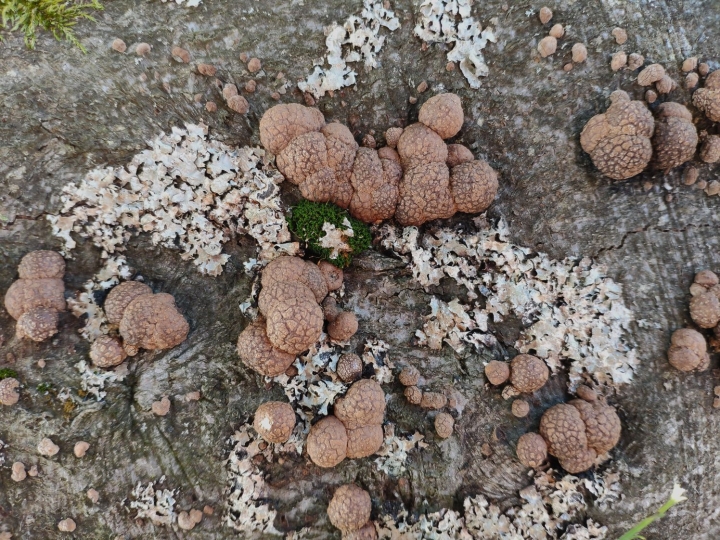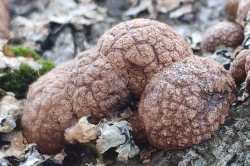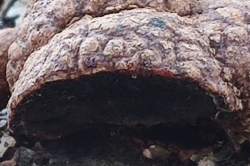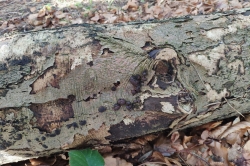Beech Woodwart
Small, irregularly hemispherical brick red to rusty brown coloured warts found in large numbers on dead or fallen beech.
| Mushroom Type | |
| Common Names | Beech Woodwart, Dafaden Ffawydd (CY), Drewniak Szkarłatny (PL), Vöröses Ripacsgomba (HU) |
| Scientific Name | Hypoxylon fragiforme |
| Synonyms | Hypoxylon coccineum, Hypoxylon cupreum, Hypoxylon argillaceum, Sphaeria fragiformis |
| Season Start | All Year |
| Season End | All Year |
| Average Mushroom height (CM) | |
| Average Cap width (CM) |
Fruiting Body
Fruit bodies (stroma in singular, stromata in plural) look like small, only 2–8 mm in diameter, irregularly hemispherical brick red to rusty brown coloured warts, covered in even tinier lumps (which holds flask-shaped individual chambers, called perithecium in singular and perithecia in plural, which contains the asci).
Habitat
Saprotrophic on dead wood (fallen branches and rotting stumps) of several hardwoods, but most of all beech (Fagus), causes white-rot. Same as its relatives, it is one of the earliest colonisers of the suitable hosts/substrates. Once it has started to colonise the dead wood, it will start growing in large numbers.
Possible Confusion
Beech woodwart (Hypoxylon fragiforme) mostly can be confused with other woodwarts.
Hazel woodwart (Hypoxylon fuscum) is smaller and growing on hazel (Corylus) and sometimes alder (Alnus) instead of beech (Fagus).
Fully mature Hypoxylon howeanum fruit bodies look almost identical to Beech Woodwart (microscopy is a must for a solid, species-level ID), while it is easy to separate the two species in their younger stage. Hypoxylon howeanum can grow on many different deciduous trees, but mostly found on hornbeam (Carpinus).
Taste / Smell
Inedible. Taste and smell not distinctive.
Frequency
Very common and widespread on the British Isles.
Other Facts
The old fruit bodies (stromata) of Beech Woodwart could be colonised by Dialonectria episphaeria, a tiny Ascomycota with vinaceous red fruit bodies which grows on various species from class Sordariomycetes, such as Common Tarcrust (Diatrype stigma), Birch Blackhead (Diatrypella favacea), Ruzenia spermoides, Chaetosphaerella phaeostroma, etc.



























COMMENTS